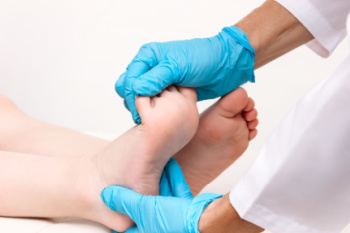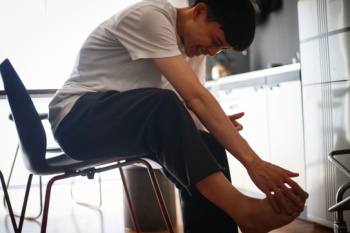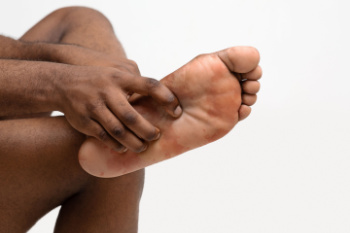 Children, especially young athletes, may experience foot pain for a variety of reasons. Biomechanical issues, like flat feet or high arches, may lead to improper weight distribution and cause foot pain in kids. Wearing ill-fitting footwear, especially shoes that are too tight or lack proper support, can also contribute to foot pain. Children active in sports and physical activities may experience overuse injuries or strains, and can experience foot injuries that are less common in adults because they are still growing. Structural abnormalities, such as toe deformities or differences in leg length, can also play a role in pediatric foot pain. Additionally, conditions including plantar warts, ingrown toenails, or infections can cause discomfort on specific areas of the foot. If your child is experiencing foot pain or a foot injury, it is suggested that you schedule an appointment with a podiatrist for diagnosis and treatment.
Children, especially young athletes, may experience foot pain for a variety of reasons. Biomechanical issues, like flat feet or high arches, may lead to improper weight distribution and cause foot pain in kids. Wearing ill-fitting footwear, especially shoes that are too tight or lack proper support, can also contribute to foot pain. Children active in sports and physical activities may experience overuse injuries or strains, and can experience foot injuries that are less common in adults because they are still growing. Structural abnormalities, such as toe deformities or differences in leg length, can also play a role in pediatric foot pain. Additionally, conditions including plantar warts, ingrown toenails, or infections can cause discomfort on specific areas of the foot. If your child is experiencing foot pain or a foot injury, it is suggested that you schedule an appointment with a podiatrist for diagnosis and treatment.
Foot Pain
Foot pain can be extremely painful and debilitating. If you have a foot pain, consult with Alex Kim, DPM from AVID Foot & Ankle Center. Our doctor will assess your condition and provide you with quality foot and ankle treatment.
Causes
Foot pain is a very broad condition that could be caused by one or more ailments. The most common include:
- Bunions
- Hammertoes
- Plantar Fasciitis
- Bone Spurs
- Corns
- Tarsal Tunnel Syndrome
- Ingrown Toenails
- Arthritis (such as Gout, Rheumatoid, and Osteoarthritis)
- Flat Feet
- Injury (from stress fractures, broken toe, foot, ankle, Achilles tendon ruptures, and sprains)
- And more
Diagnosis
To figure out the cause of foot pain, podiatrists utilize several different methods. This can range from simple visual inspections and sensation tests to X-rays and MRI scans. Prior medical history, family medical history, and any recent physical traumatic events will all be taken into consideration for a proper diagnosis.
Treatment
Treatment depends upon the cause of the foot pain. Whether it is resting, staying off the foot, or having surgery; podiatrists have a number of treatment options available for foot pain.
If you have any questions, please feel free to contact our office located in Little Elm, TX . We offer the newest diagnostic and treatment technologies for all your foot care needs.




